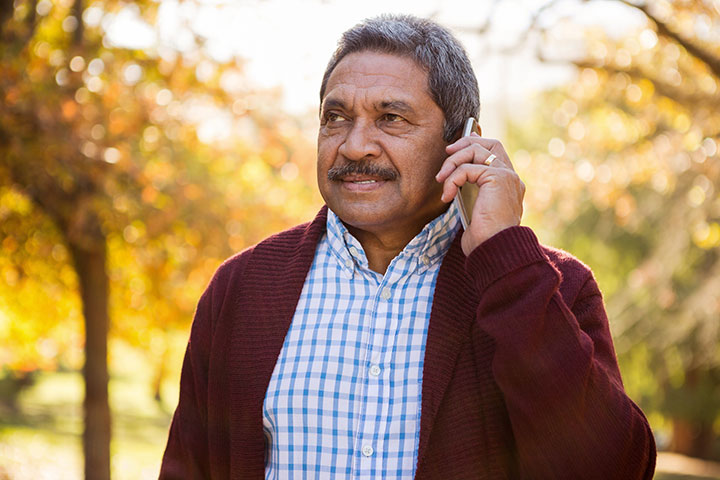Living in the same household as an aging parent is often the best way for an adult child to provide for the parent’s needs. About 14% of adults who live in someone else’s home are the parent of the head of household. That percentage doubled between 1995 and 2018.
Multigenerational households have been increasing for decades. Some adult children live with their parents because they can’t afford their own homes. Some parents live with their children because they cannot live independently and cannot afford to live in a long-term care facility. In some cases, pooling resources and living together makes financial sense for adult children and their parents.
Still, a large majority of parents live apart from their adult children. Most seniors say they have an excellent relationship with their children, but that does not mean they want to live together. Many seniors value their independence or don’t want to feel they are being a burden to their families.
Adult children generally agree with their parents that it is best for parents to “age in place” when they do not need the specialized services offered by assisted-living facilities. Still, parents who remain in their own homes often need and receive the help of adult children as they grow older. Providing that help during a pandemic can be difficult.
Helping Parents During a Pandemic
A pre-pandemic survey found that adults in the United States, Italy, and Germany often help parents who are over the age of 65 by performing errands, housework, or home repairs. Italians were most likely to provide that assistance, perhaps because Italy’s economy encourages multiple generations to live in the same home.
Even in the United States, adult children tend to live close to their parents. Americans have become less mobile over the last few decades. A 2015 study found that “the median distance Americans live from their mother is 18 miles, and only 20 percent live more than a couple of hours’ drive from their parents.” Proximity increases opportunities for adult children to help their parents without household chores.
It’s easy to maintain social distancing while doing yard work or cleaning gutters. Even while cleaning a home or delivering groceries, children can protect their parents from infection by avoiding physical contact, wearing a mask, and washing their hands — and by encouraging their parents to do the same. Purchasing appropriate masks for parents and ensuring that they fit properly minimizes the risk of transmitting the virus while working in a parent’s home.
Using Technology to Help from Afar
When parents do not live near their adult children, helping them may require a technological assist. Aging parents may be more comfortable with a land line, but they might also enjoy the face-to-face engagement offered by Zoom and other meeting apps. It’s also easier for adult children to identify physical and emotional problems their parents may be having when they can see their parents during conversations.
Children may want to buy their parents a laptop or tablet to promote communication. Purchasing a device with which children are familiar will make it easier to answer a parent’s technical questions. The nonprofit Older Adults Technology Services Inc. (OATS) offers senior-friendly tutorials and technology demonstration videos that can help seniors acquire the technological know-how they need to stay in touch with family. OATS also offers valuable online information about telemedicine, fitness, and staying safe during a pandemic.
Amazon’s Alexa helps families stay in touch with parents who live alone. Unfortunately, Alexa discontinued its free Care Hub feature that allowed children to use a smartphone app to check in with their parents through their Echo devices. Amazon’s replacement tool, Alexa Together, allows family members using Echo devices to monitor and communicate with older relatives and to contact a 24/7 Urgent Response team. Alexa Together requires a subscription fee of $20 per month.
When parents suffer from mild dementia but are capable of independent living, children may fear that their parents will become disoriented or lost when they leave home. Children may want to give their parents a location device that uses GPS tracking to monitor their movements. Some devices can be attached to shoes or other clothing items that a parent always wears.
Equipping a parents’ home with Smart Home devices can help ease an adult child’s worries about parents who choose to age in place. Ranging from security systems and contact sensors to smoke detectors and water sensors, many devices can be programmed to send alerts to a relative’s smartphone when they detect signs of trouble.
Apps for Isolated Parents
Adult children who live near their parents can give them a ride to a doctor’s office or beautician. Seniors who no longer drive and who live far from their children may have difficulty finding transportation. Apps for ride-sharing services like Uber and Lyft that are familiar to adult children may be new to their parents. Helping parents download and learn to use those apps may solve their transportation problems.
Ride sharing apps require a smartphone. Some seniors believe their landline is enough and don’t want to incur the expense of a calling plan. For a fee, the GoGoGuardian system allows members to call a toll-free number and request an Uber or Lyft driver. The GoGo system attempts to match seniors with “visual, ambulatory, cognitive and dexterity impairments” to drivers who have earned positive ratings while transporting similar passengers.
Apps can also help seniors who are need companionship when their adult children are unable to visit. For a fee, Papa allows seniors to schedule a visit from a student volunteer. Papa Pals run errands or help seniors learn to use technology. They can also spend time with seniors, either virtually or in a socially distanced setting, to help alleviate loneliness.
Seniors who feel isolated may also benefit from AARP’s Friendly Voice program. Seniors can request a call from a volunteer who will brighten their day with an upbeat conversation.
(This article has been updated March 2025 since it originally published February 2021.)
